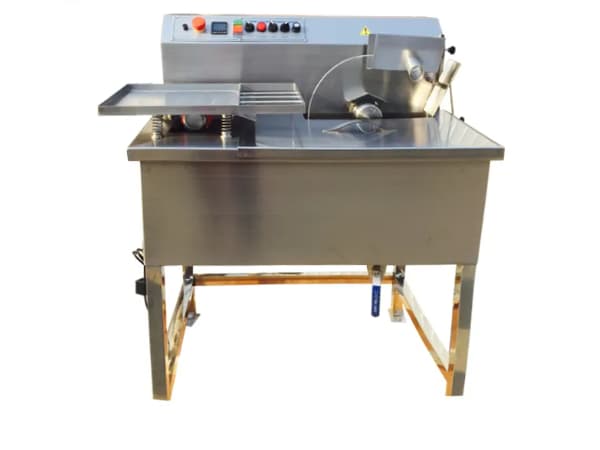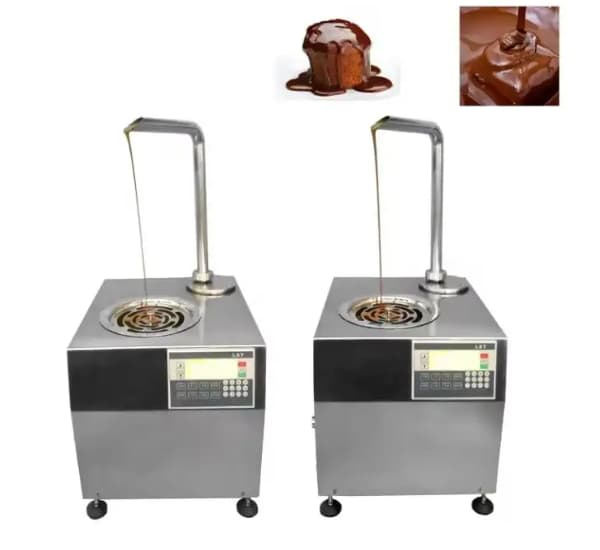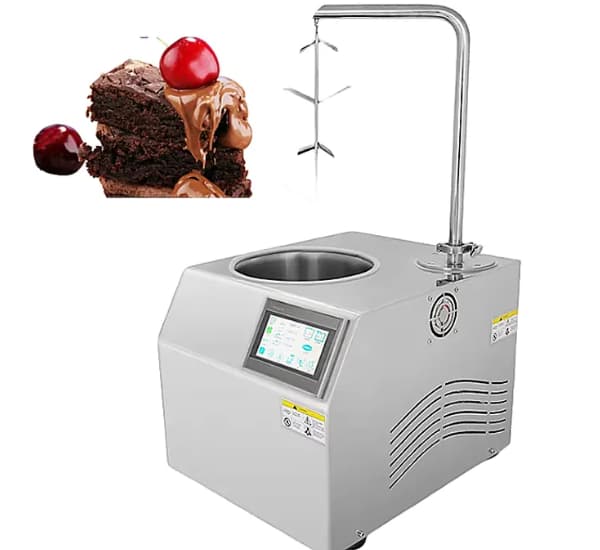Hot chocolate is a beloved beverage enjoyed around the globe, especially in colder seasons. For cafes, restaurants, hotels, and other food service establishments, offering high-quality hot chocolate can boost customer satisfaction and increase sales. This is where a commercial hot chocolate machine becomes essential. These machines are specifically designed for high-volume environments, delivering consistency, speed, and rich flavor.
In this comprehensive guide, we’ll explore the different types of commercial hot chocolate machines, key features to consider, how to choose the right one for your business, and provide a detailed technical specification table for reference.

What is a Commercial Hot Chocolate Machine?
A commercial hot chocolate machine is a professional-grade appliance designed to prepare, mix, and dispense hot chocolate beverages in commercial settings. Unlike home-use devices, these machines are built for durability, consistent heating, and high-capacity performance. Many models also offer features such as temperature control, automatic stirring, and digital displays to enhance user experience and efficiency.
Types of Commercial Hot Chocolate Machine
There are various types of hot chocolate machines tailored to different business needs:
1. Dispenser Machines
These units have a built-in mixing and heating system that stirs powdered or liquid chocolate with milk or water. They typically have a transparent tank for visual appeal and are perfect for countertop display.
2. Bean-to-Cup Hot Chocolate Machines
These high-end machines use chocolate syrup or granules and often include an integrated grinder and milk frother. Some models are multipurpose and can also brew coffee or cappuccino.
3. Batch Cookers
Larger in size, batch cookers prepare hot chocolate in large quantities and keep it warm over time. They are ideal for banquet halls or catering services.
Key Features of a Commercial Hot Chocolate Machine
When choosing a machine, several critical features impact performance, usability, and overall value:
✅ Capacity
Measured in liters or cups per hour, capacity should match your business’s daily demand. Typical machines range from 3L to over 10L.
✅ Heating Element
The quality of the heating element affects temperature stability. Look for stainless steel or high-grade alloy heating components.
✅ Temperature Control
Precise control ensures the drink stays hot without burning. Digital thermostats and programmable settings add convenience.
✅ Automatic Stirring
Integrated stirring prevents sedimentation and ensures a smooth, creamy consistency.
✅ Ease of Cleaning
Removable parts and dishwasher-safe components save time and ensure hygiene.
✅ Energy Efficiency
Energy-saving modes or insulated tanks can lower operating costs.

Technical Specifications Table
Below is a technical comparison of popular commercial hot chocolate machines:
| Model Name | Capacity (Liters) | Power (Watts) | Voltage (V) | Heating Type | Stirring Mechanism | Temperature Control | Weight (kg) | Dimensions (mm) |
|---|---|---|---|---|---|---|---|---|
| ChocoPro 5000 | 5L | 1000W | 220V | Induction | Magnetic stirrer | Digital thermostat | 9 kg | 320 x 250 x 450 |
| BaristaPro HC8 | 8L | 1300W | 220V | Resistive coil | Motorized paddle | Manual dial | 11 kg | 360 x 280 x 520 |
| EuroMix Deluxe | 10L | 1500W | 220V | Induction | Rotating impeller | Digital touchscreen | 13 kg | 400 x 300 x 560 |
| ChocoExpress Mini | 3L | 900W | 110/220V | Electric coil | Spiral stirrer | Analog dial | 7 kg | 290 x 220 x 410 |
| HotMix Pro 12 | 12L | 1800W | 220V | Dual coil | Continuous motion | Programmable | 15 kg | 450 x 350 x 600 |
Advantages of Using a Commercial Hot Chocolate Machine
🏆 Consistency in Flavor
Manual preparation may lead to inconsistencies in texture and temperature. A commercial machine ensures each cup is just right.
🏆 Speed and Efficiency
These machines can serve dozens of cups per hour, reducing wait time during peak hours.
🏆 Visual Appeal
Many models have transparent tanks or sleek modern designs, adding a visual element that can entice customers.
🏆 Versatility
Some machines are multifunctional, capable of preparing other hot beverages such as lattes or mochas.
🏆 Energy-Saving Features
Newer models come with eco-modes that reduce electricity consumption without compromising performance.
Use Cases for Commercial Hot Chocolate Machines
Commercial hot chocolate machines are ideal for various establishments:
- Cafes and Coffee Shops: Quick and reliable service of high-quality hot chocolate.
- Hotels and Resorts: Buffet-style breakfast service with self-serve capability.
- Event Catering: High-capacity models support large-scale operations.
- Movie Theaters: Hot chocolate as a complementary or premium beverage option.
- Ski Lodges: Ideal for winter resorts where hot drinks are in high demand.

How to Choose the Right Hot Chocolate Machine for Your Business
When selecting a commercial hot chocolate machine, consider the following:
📌 Volume Needs
Estimate how many cups you’ll serve per day and match that with the machine’s hourly output.
📌 Space Constraints
Measure your countertop or service area to ensure the machine will fit comfortably.
📌 Budget
Prices range from a few hundred to several thousand dollars. Determine what features are essential versus optional.
📌 Maintenance
Choose models with easy-to-clean parts and accessible service support.
📌 Brand and Warranty
Stick with reputable brands that offer at least a one-year warranty and responsive customer service.
Cleaning and Maintenance Tips
Proper maintenance extends the lifespan of your machine and ensures a hygienic beverage experience.
🧽 Daily Cleaning:
- Drain and rinse the tank after each day.
- Wipe down the exterior with a damp cloth.
- Run hot water through the dispensing mechanism.
🧼 Weekly Deep Clean:
- Disassemble stirrers and other removable parts for soaking.
- Use a food-safe descaling agent if applicable.
- Inspect for buildup in nozzles or heating areas.
Digital Innovation: Smart Hot Chocolate Machines
The rise of IoT (Internet of Things) and smart appliances has reached commercial kitchen equipment as well. Some hot chocolate machines now offer:
- Wi-Fi Connectivity: Remote monitoring and control.
- Cloud Recipes: Automatic updating of mix ratios and new recipes.
- Usage Analytics: Track number of servings, energy consumption, and maintenance cycles.
- Voice Control: Integration with systems like Alexa or Google Assistant.
These features are perfect for chain establishments or tech-forward foodservice providers.
Common Mistakes to Avoid
❌ Overlooking Power Requirements
Make sure the machine’s voltage matches your kitchen’s power outlet to avoid compatibility issues.
❌ Neglecting Maintenance
Even the best machines will degrade without regular cleaning and servicing.
❌ Buying for Price Alone
Low-cost models may sacrifice durability or key features. Balance your decision with long-term ROI.
Best Brands in the Market
Some of the top-rated brands known for producing high-quality commercial hot chocolate machines include:
- DT Food Machine
- Schaerer
- Cecilware
- Waring Commercial
- Bravilor Bonamat
- SaniServ
- Rheavendors
Always verify regional availability and check user reviews before purchasing.
Future Trends in Hot Chocolate Machines
The market for commercial hot chocolate machines is evolving with customer expectations and technology:
- Eco-Friendly Materials: Use of biodegradable or recyclable components.
- Faster Heating Systems: Induction-based or infrared systems for quicker service.
- Custom Dispensing Volumes: Programmed settings for cup sizes and sugar levels.
- Self-Cleaning Systems: Automatic cleaning cycles to reduce labor.
Final Thoughts
Investing in a commercial hot chocolate machine can elevate your beverage offerings, increase customer satisfaction, and improve workflow efficiency. Whether you’re a small café or a large event venue, choosing the right machine means balancing capacity, features, and ease of use. With smart design and regular maintenance, your machine will serve thousands of rich, velvety hot chocolates for years to come.
